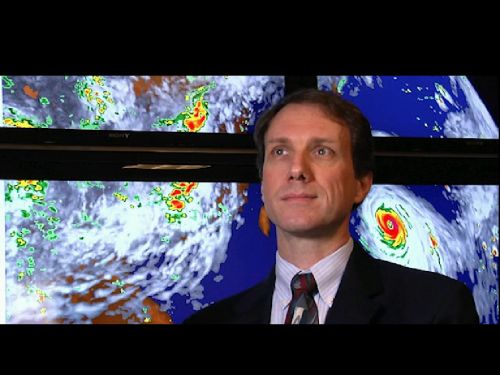Looking Ahead to Local Climate Models

This Behind the Scenes article was provided to LiveScience in partnership with the National Science Foundation.
When research scientist Jim Kinter describes the interactions between the Earth's ocean, land and atmosphere, he talks of dancing. "The atmosphere and the ocean, and the atmosphere and the land surface have to go together," he said. "It's as if they were dancing, and that dance turns out to influence climate."
Kinter, a professor of Climate Dynamics at George Mason University and director of the Center for Ocean-Land-Atmosphere Studies (COLA), along with COLA scientists, study this "dance" to better understand the predictability of climate — how it varies.
According to Kinter, today many of us are familiar with climate change and its causes. In fact, he adds, we've known for well over a hundred years that human influences that increase carbon dioxide and other greenhouse gases in the atmosphere affect the global average climate. One look at the increased occurrence of floods, drought, and extreme weather across the Earth, and it's easy to conclude that something is up.
Tough next steps
"What we are having a harder time being able to pin down," Kinter said, "is what's going to happen at the local scale or the regional scale, where decisions are made."
With support from the National Science Foundation, NOAA and NASA, scientists at COLA are working to provide the world with more accurate climate predictions — with longer leads — of where climate changes will occur and what the impacts will be on human societies and ecosystems.
Sign up for the Live Science daily newsletter now
Get the world’s most fascinating discoveries delivered straight to your inbox.
"If people want to know where to build the clean energy solutions, where to put up the wind farms, where is the right place to invest in solar energy," said Kinter, "that all depends on the climate and importantly it depends on the variability and the change that we expect."
Countries like Bangladesh and Maldives are already at risk of being flooded due to sea level rise and harsh weather. If decision makers in nations that are most vulnerable to climate change are provided with the right information and resources, a decade or more in advance, then they will be better able to plan for the expected changes.
The El Nino example
Climate related predictions coming out of COLA and other organizations are already improving the way decisions are being made.
"El Nino is a big fluctuation in the surface temperature of the tropical Pacific Ocean," said Kinter. The repercussions of those changes in surface temperature are worldwide. Kinter said they're related to droughts in South America, forest fires in Indonesia, floods in North America, and higher snow packs in the Colorado Rockies. "A major El Nino event or its inverse, which we call La Nina, might be really good for the ski industry," he said.
Over the past two decades, COLA has helped to quantify and calibrate the degree to which El Nino can be predicted. Today, predictions of El Nino can be made six months or more in advance.
"So there are many countries, particularly in the tropics and in the developing world that are using our El Nino forecasting system to make decisions," said Kinter. "If they know that El Nino is more likely to push them into drought conditions then they may invest in a more resilient seed to make sure that [crops] are going to make it through a drought."
Supercomputers and climate predictability
Supercomputers are helping researchers learn more about the complex interactions that influence climate change. "We use the supercomputers to solve the equations that govern the Earth's atmosphere, the global ocean and the land surface, and we do that in a fully coupled mode," said Kinter. "We let the simulated atmosphere, the simulated ocean and the simulated land surface interact with each other inside the computer, so it's really very exciting to watch these simulations."
Although the simulations have come a long way in providing high quality regional information, Kinter finds there is room for improvement. "Convective clouds— the thunder storm clouds — turn out to be very poorly represented in the models that we're using for climate simulation today," he said. "But if we could get to a model that can resolve the clouds, then we think we will actually have a breakthrough."
Kinter believes towards the end of the decade we'll have better supercomputers that will give us the opportunity to simulate the global climate more accurately. "We're talking all the way down to the cloud scale, all the way down to the scale of eddies in the ocean and all the way down to the landscape scale at the land surface."
"When we get to that point," he said, "we think that we're going to have climate simulations that will be able to tell you: is this predictable, is it not predictable, here are the predictions and here's the reliability that we believe in."
Editor's Note: This research was supported by the National Science Foundation (NSF), the federal agency charged with funding basic research and education across all fields of science and engineering. Any opinions, findings, and conclusions or recommendations expressed in this material are those of the author and do not necessarily reflect the views of the National Science Foundation. See the Behind the Scenes Archive.









